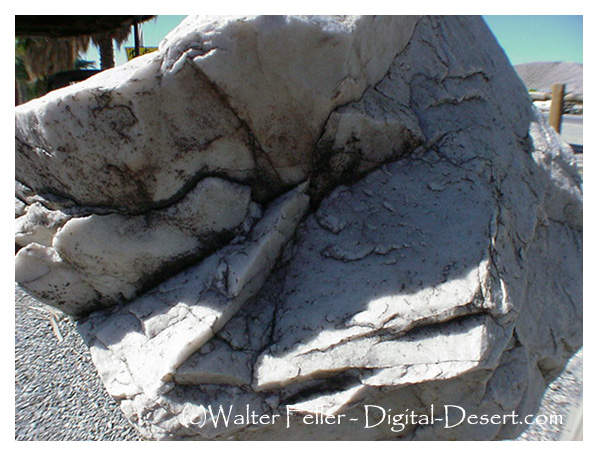Eureka Quartzite

< Previous - Next >
350 foot thick, 440-450 million years old. A true quartzite formed from metamorphosed sandstone formed in a dry environment. About the time of this formation land plants begin to appear.
Phanerzoic eon > Paleozoic era > Ordivician period > Upper epoch > Hirnantian age
Eureka Quartzite Death Valley Region
The Eureka Quartzite is a prominent geological formation within the Death Valley region, notable for its extensive and well-preserved quartzite layers. This formation plays a significant role in understanding the Paleozoic geological history of the area, particularly during the Ordovician period.Characteristics and Composition
The Eureka Quartzite is primarily composed of:Quartzite:
This is a hard, metamorphic rock formed from the cementation and recrystallization of quartz-rich sandstone. In the Eureka Quartzite, the quartzite is typically very pure, characterized by its durability and resistance to weathering.Geological Significance
Age:
The Eureka Quartzite is dated to the Middle to Late Ordovician period, roughly 485 to 443 million years ago. This was a time of significant geological and biological activity, including the diversification of marine life.Paleoenvironment:
The formation of such a thick, pure quartzite layer indicates deposition in a high-energy environment, likely a beach or shallow marine setting where quartz sand could accumulate and later lithify into quartzite.Regional Extent:
The Eureka Quartzite is noteworthy not just for its presence in Death Valley but also for its wide distribution across the Great Basin in the United States, indicating widespread geological processes were at play across a significant area during its formation.Research and Relevance
The Eureka Quartzite is extensively studied for its geological characteristics and its role in reconstructing the paleogeographic and tectonic history of the western United States during the Ordovician. Its widespread presence and distinct physical properties make it a marker bed, used by geologists to correlate geological features across large distances. Understanding the conditions that led to the deposition of the Eureka Quartzite also provides insights into the Ordovician climatic conditions and the dynamics of ancient shorelines and shallow marine environments.Oo.
